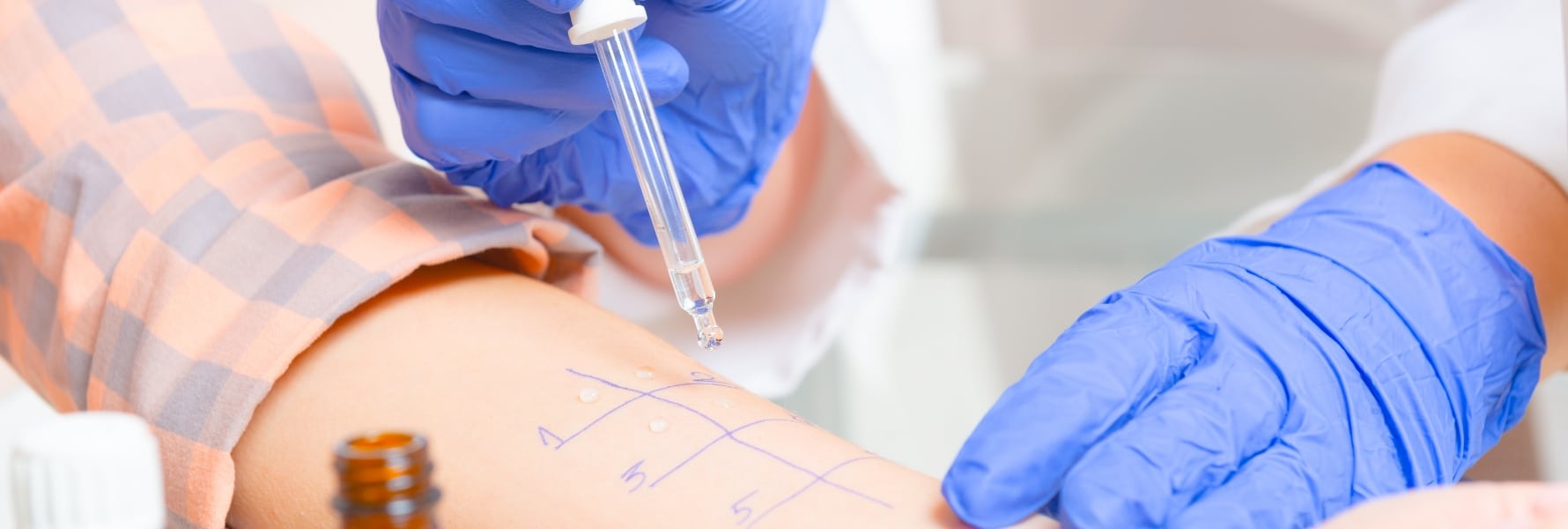
Skin testing is a common diagnostic tool used to identify the specific allergens that trigger contact dermatitis and, occasionally, systemic allergic reactions. Common trigger substances include cleaning solutions, detergents, cosmetics, perfumes, latex rubber and poison ivy.
Skin allergy tests may be administered to diagnose the root causes of allergic reactions. Only penicillin and certain related medication allergies are commonly tested for in this manner, however, since the risk of a systemic reaction to food substances or other medications is considered to be too great.
Types of Skin Test Procedures
Before undergoing allergy skin testing, patients should stop using corticosteroids in the area to be tested and avoid taking oral antihistamines since either may produce inaccurate results.
Allergy skin tests using potential irritants, such as pollen, insect venom or animal dander, are administered in three basic ways.
Scratch Tests
Scratch tests are administered on the forearm. Once the targeted area has been cleaned with alcohol, a drop of each potential allergen is applied to a specific place on the forearm, marked to indicate its presence. The substance is applied where the outer layer of skin, the epidermis, has been pricked. Frequently, the scratch test administered is a T.R.U.E. TEST®, a comprehensive exam which tests for sensitivity to 29 common allergens.
Intradermal tests
The difference between the scratch test and the intradermal test is that during an intradermal procedure the potential allergen is injected just below the skin. This test is typically used to test for one particular substance, like penicillin or bee venom, already suspected of causing an allergic response.
Patch tests
In this method of allergy testing, many patches are taped to the skin, usually the skin of the upper back. Unlike the two previous methods of allergy skin testing, patch tests necessitate that the patches be left in place for 48 hours during which the area must be kept dry. As with the other forms of allergy skin testing, patients must be alerted to the possibility of a severe reaction so they can remove any patch that is causing serious problems, such as wheezing, and notify their physician immediately.
No matter which way the allergens are applied to the skin, the physician examines the area for a reaction which may range from completely negative, meaning the patient has no allergy to the substance, to extreme, in which case the patient shows severe reaction to the substance, such as swelling, itching, blistering or ulceration. Once positive results have been determined, patients can take steps to avoid their triggers and prevent allergic responses from occurring.
Side Effects of Allergy Skin Testing
Although skin allergy testing is considered a safe and effective diagnostic tool, these tests do cause a small area of contact dermatitis at the site of application, and may, under certain circumstances, result in a mild version of systemic reactions. In very rare instances, skin allergy tests, usually only intradermal ones, can result in anaphylaxis, a systemic reaction during which the patient‘s may experience: itching, wheezing, swelling of the face or entire body, trouble breathing, and low blood pressure. Since this type of reaction can result in shock, and even death, in a short time, patients showing symptoms of anaphylaxis require emergency treatment.
Contact Us In Plantation
Skin allergy testing can help find the root cause of what's triggering your contact dermatitis & other allergic reactions. Our experienced dermatologist, looks forward to helping you diagnose the issue — call him at (954) 577-5161 to get started!

